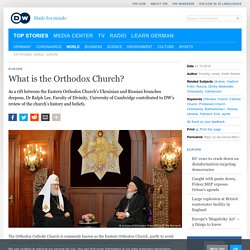

10 Christian Stereotypes the World Believes Even If They Aren't True. The way the world sees Christian stereotypes is perpetuated by pop culture, old traditions and even social media.

If I mention Ned Flanders, you know what I mean. From the world’s perspective, Christians are often seen as the out of touch neighbors who never sin but love to judge those who do. Now, to be fair, sometimes these stereotypes contain a kernel of truth, but I would argue that most of the truth is present only in small pockets of Christianity and not in the majority of believers practicing their faith. These popular stereotypes are teased out in The Resurrection of Gavin Stone, a new faith-based rom-com from producer Dallas Jenkins that releases this week in theaters. In it, Gavin Stone, played by actor Brett Dalton, is a washed up childhood celebrity who’s forced to return home and do community service. In the end, Stone discovers his paper-thin version of Christianity isn’t accurate, but he also finds out he has much more in common with church-goers than he ever expected. 1. BBC - Religion: Christianity. Christianity - Dogma, Definition & Beliefs.
Christianity is the most widely practiced religion in the world, with more than 2 billion followers.

The Christian faith centers on beliefs regarding the birth, life, death and resurrection of Jesus Christ. While it started with a small group of adherents, many historians regard the spread and adoption of Christianity throughout the world as one of the most successful spiritual missions in human history. Christianity Beliefs Some basic Christian concepts include: Christians are monotheistic, i.e., they believe there’s only one God, and he created the heavens and the earth. Who was Jesus? Most historians believe that Jesus was a real person who was born between 2 B.C. and 7 B.C. According to the text, Jesus was born to a young Jewish virgin named Mary in the town of Bethlehem, south of Jerusalem in modern-day Palestine. Very little is known about Jesus’s childhood.
Jesus was raised Jewish, and according to most scholars, he aimed to reform Judaism—not create a new religion. Jesus’s Teachings. News and current affairs from around the continent. The Orthodox Catholic Church is commonly known as the Eastern Orthodox Church, partly to avoid confusion with the Roman Catholic Church.

It counts around 200 million members, most of them in eastern Europe, Greece and the Caucasus. Its traditional base is in modern-day Istanbul, previously known as Constantinople. In its first thousand years, the Eastern Orthodox Church coexisted with the Rome-based Catholic Church, although relations between the two were always fraught by both theological and political differences. These differences ultimately led to the East-West Schism, also known as the Great Schism, in 1054 A.D., in which Rome and Constantinople broke with one another.
Each side blamed the other for the rupture, sometimes even accusing the other of heresy. The religious role of Constantinople dates back to the Emperor Constantine, who in the 4th century made Christianity the official religion of the Byzantine Empire and thus of its capital. Complex organization. People Tell A Pastor Why They Don't Believe In God. Parables of Jesus. The parables of Jesus can be found in all the canonical gospels, and in some of the non-canonical gospels, but are located mainly within the three synoptic gospels.

They represent a key part of the teachings of Jesus, forming approximately one third of his recorded teachings. Christians place high emphasis on these parables, since they are the words of Jesus, they are believed to be what the Father has taught, indicated by John 8:28 and 14:10.[1][2] Jesus' parables are seemingly simple and memorable stories, often with imagery, and all convey messages. Scholars have commented that although these parables seem simple, the messages they convey are deep, and central to the teachings of Jesus.
Christian authors view them not as mere similitudes which serve the purpose of illustration, but as internal analogies where nature becomes a witness for the spiritual world.[3][4] Roots and sources[edit] As a translation of the Hebrew word מָשָׁל mashal the word parable can also refer to a riddle.